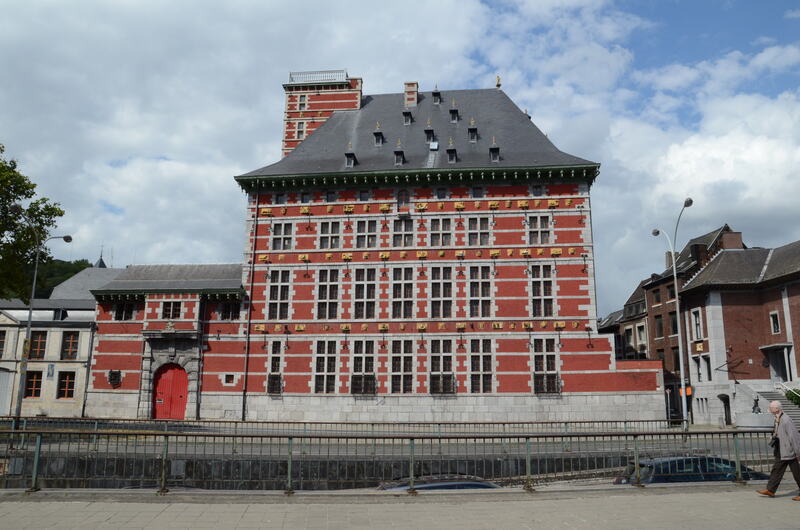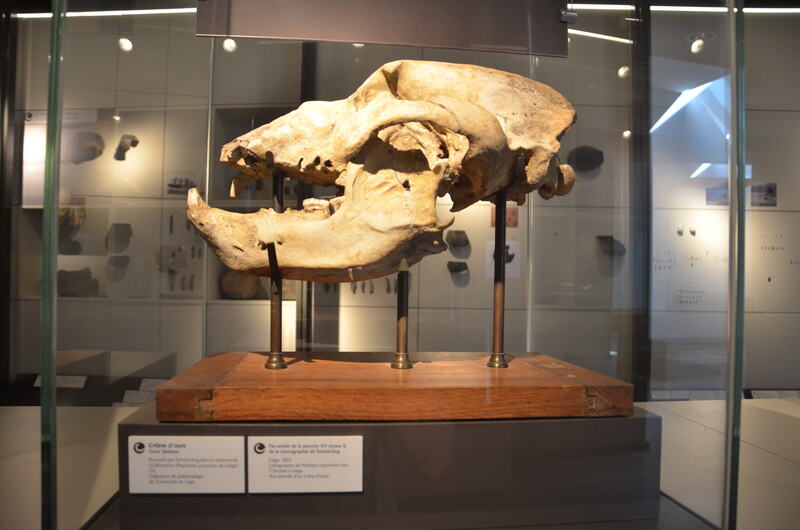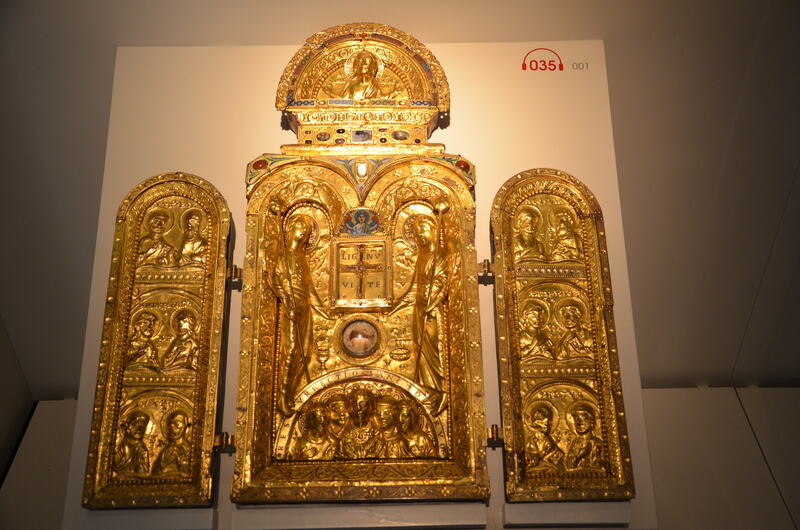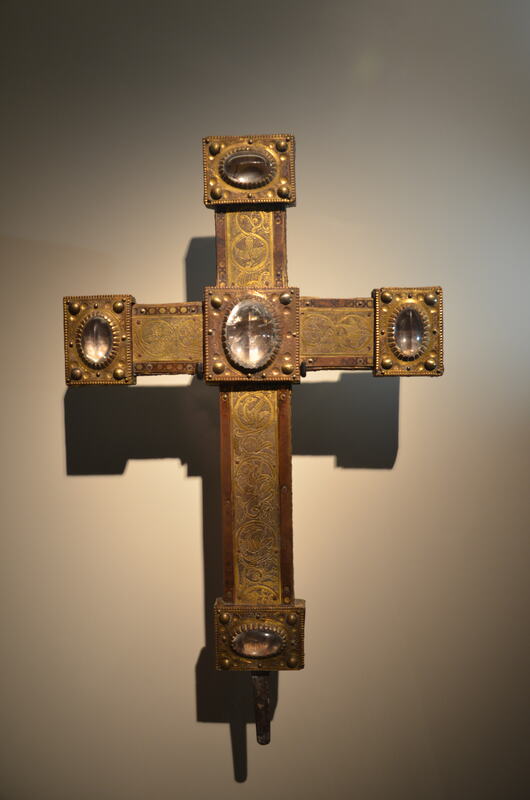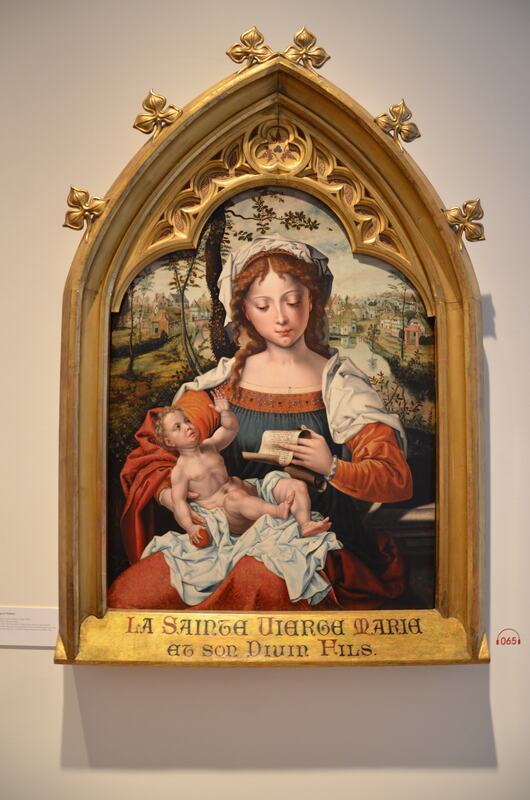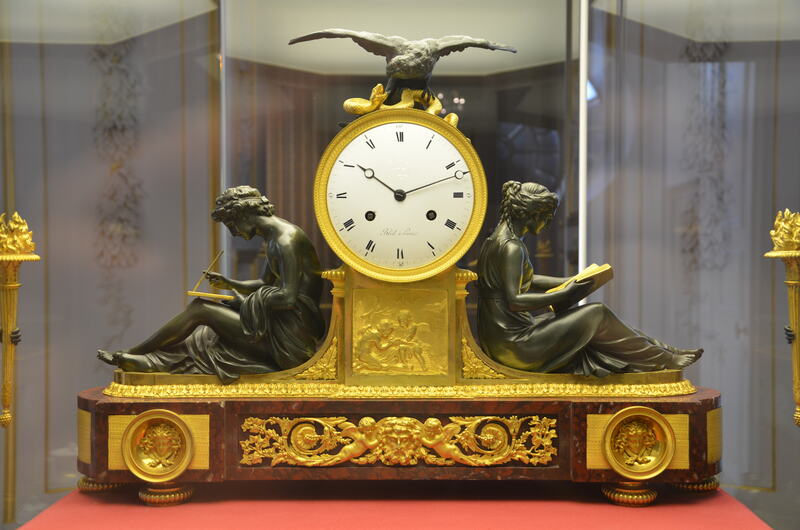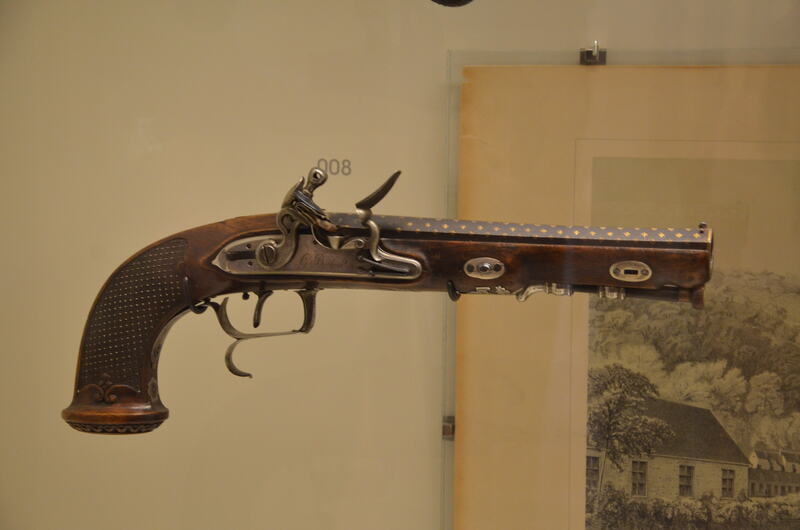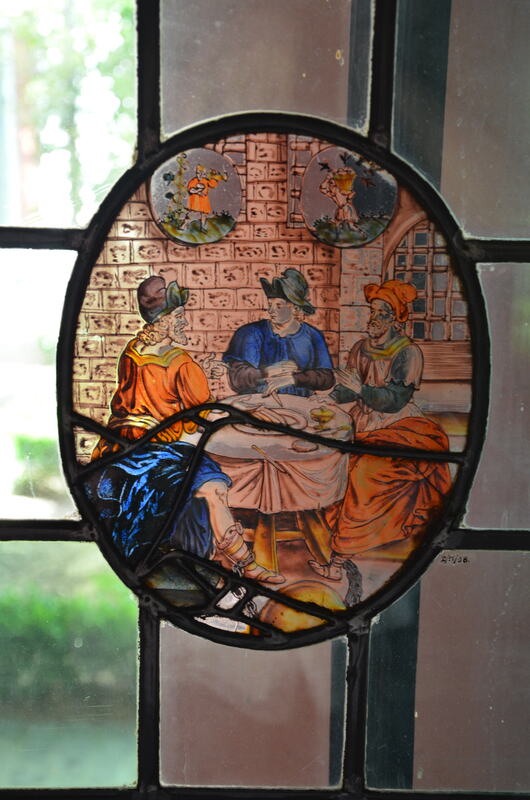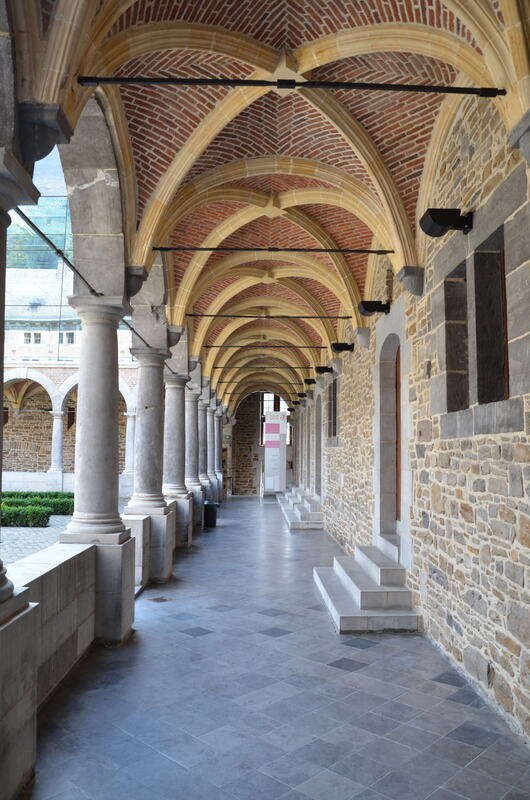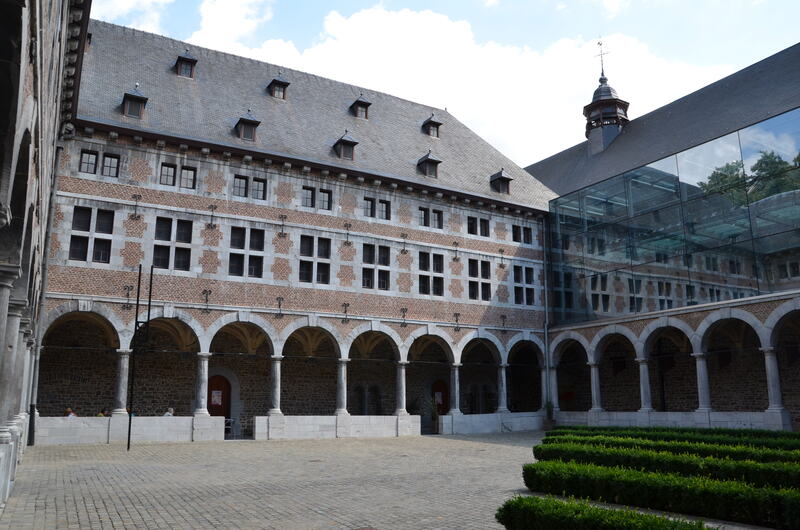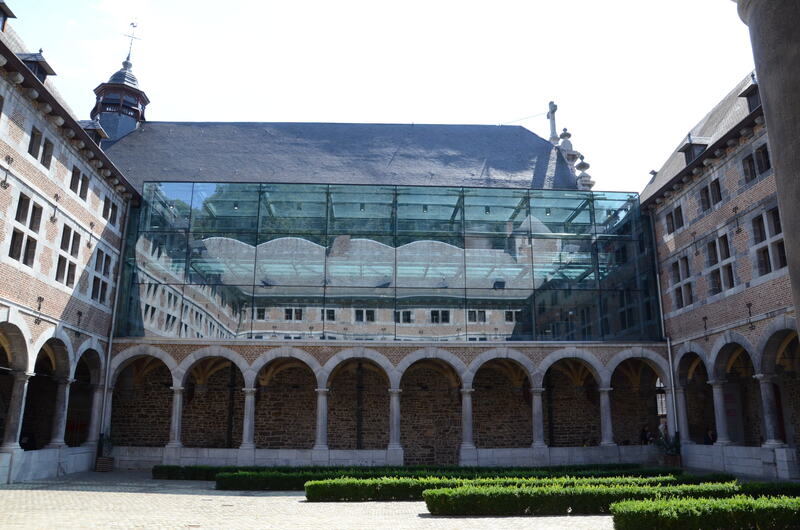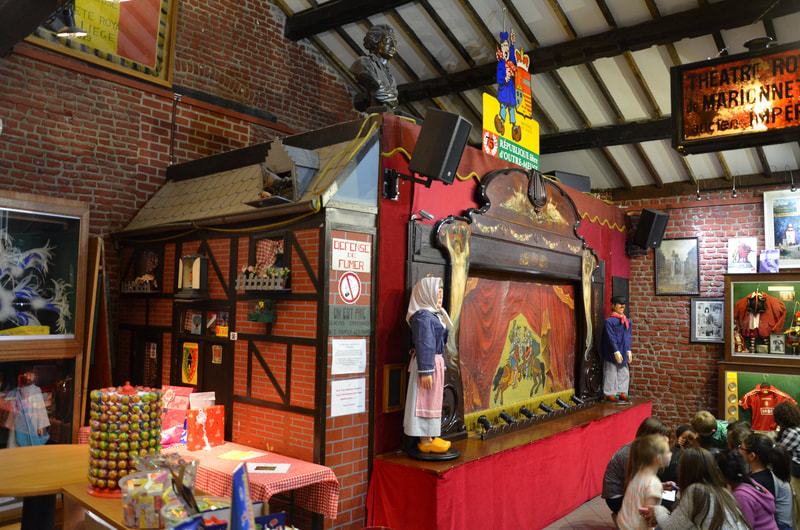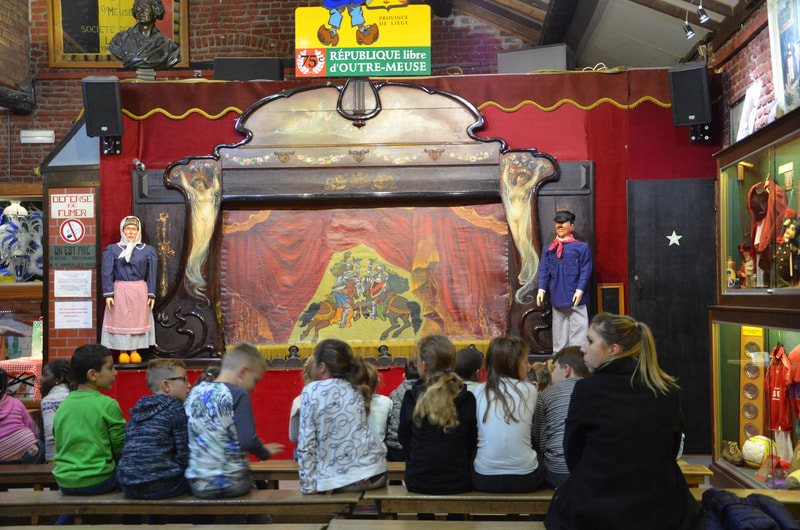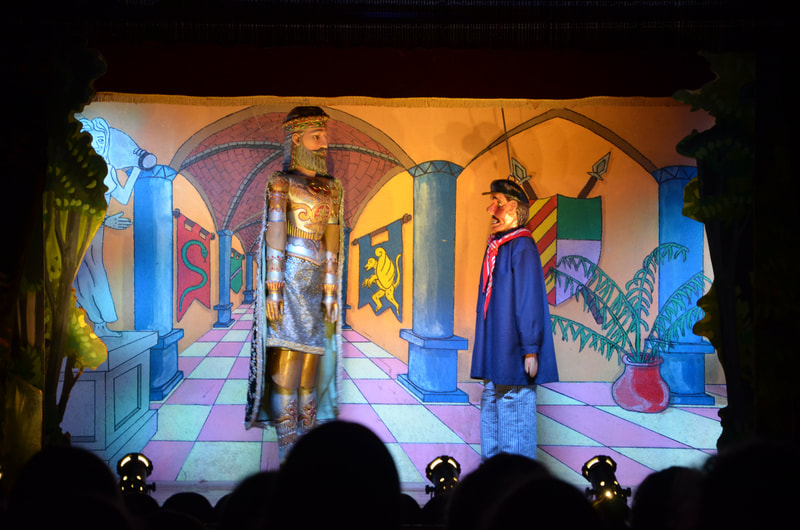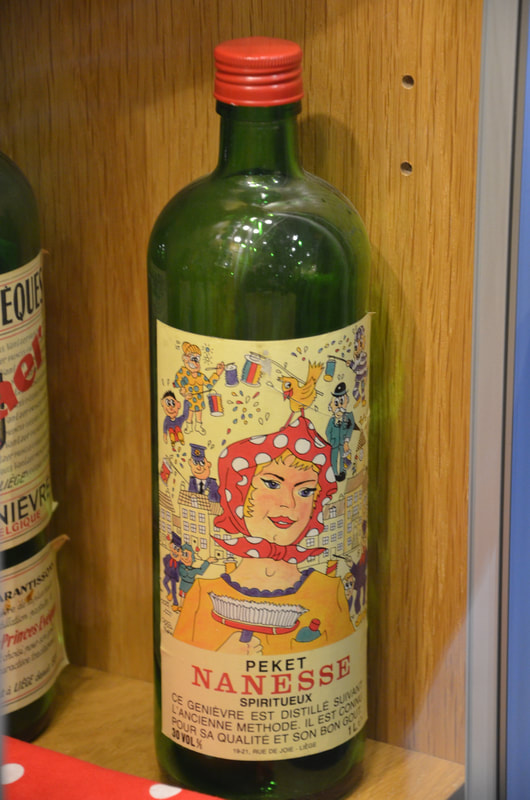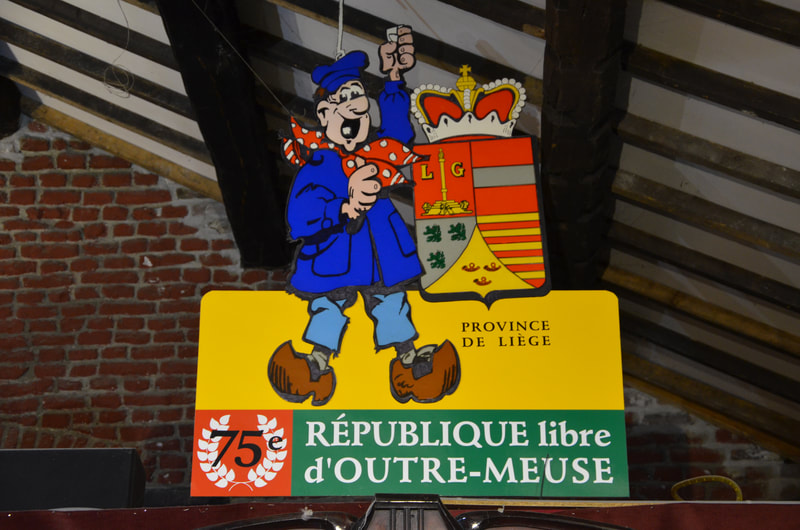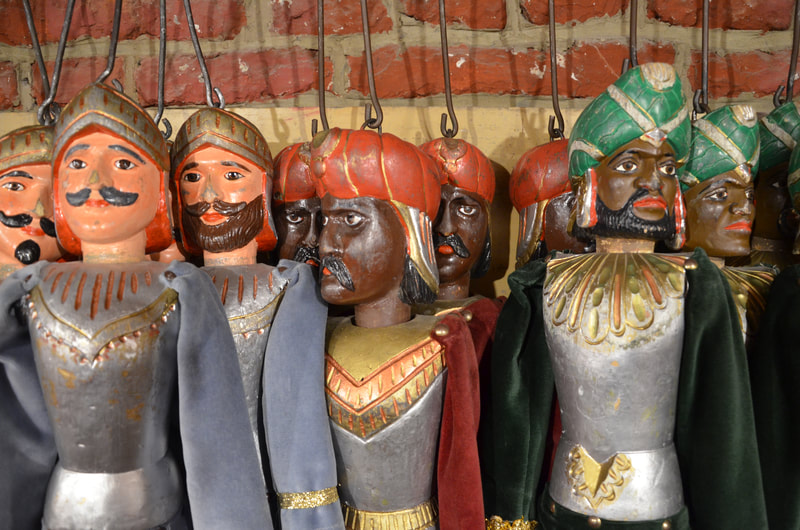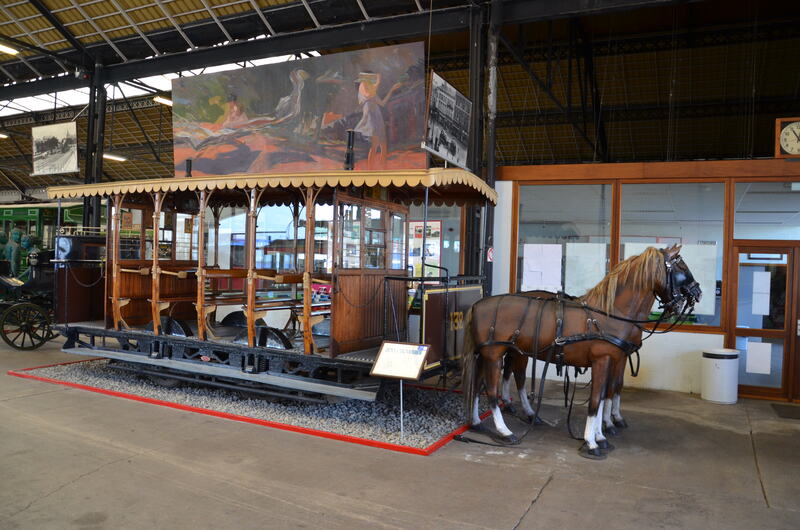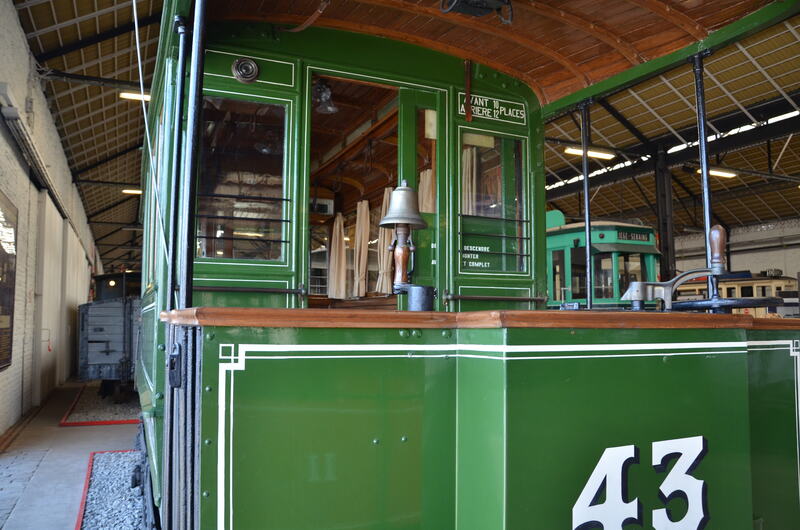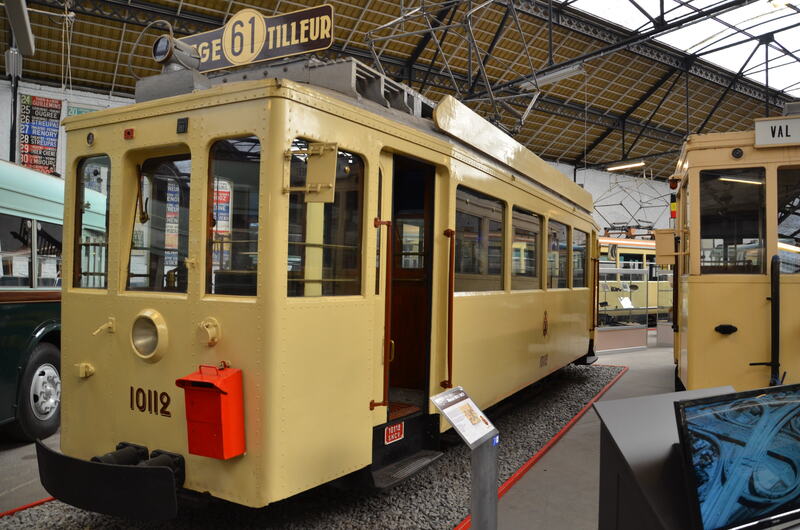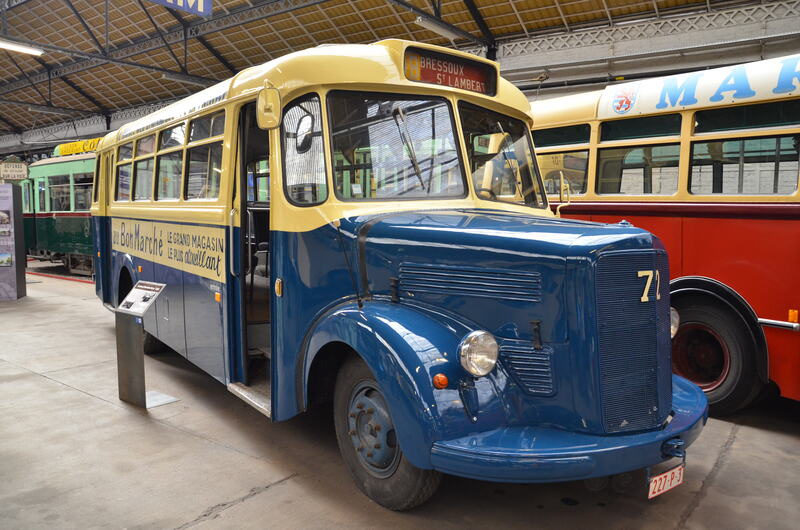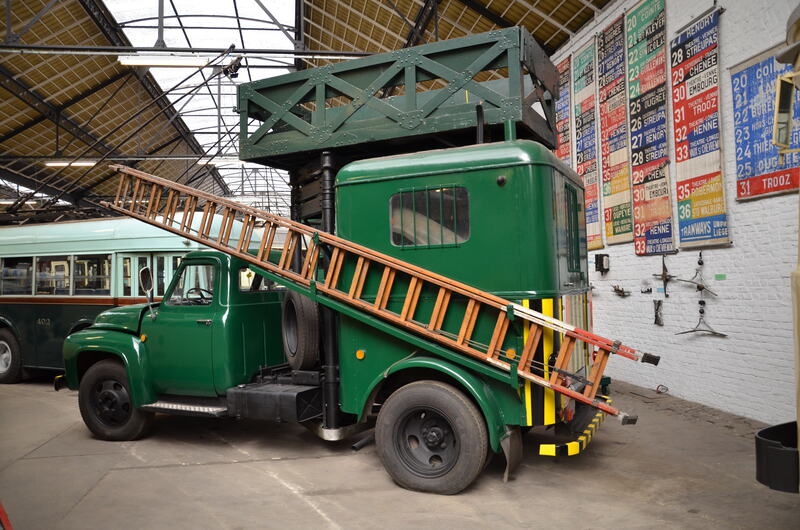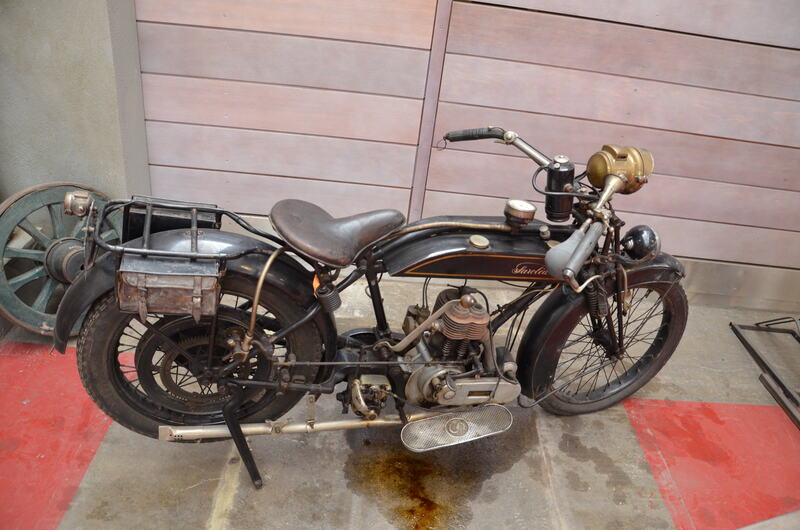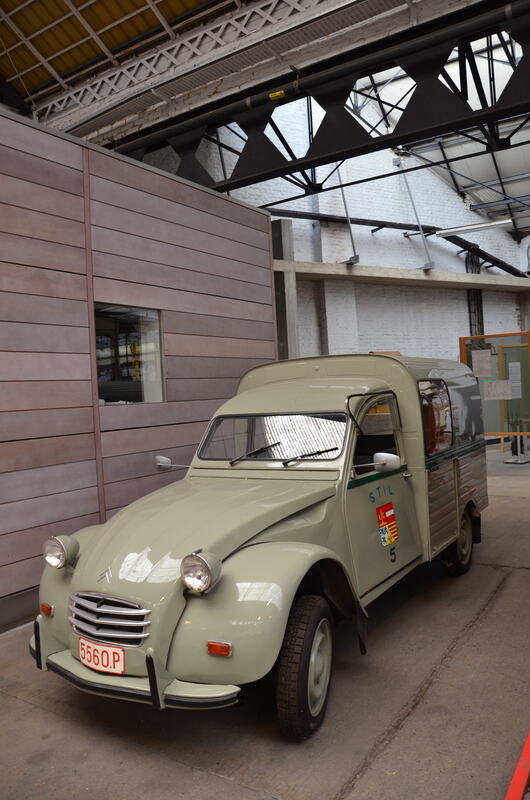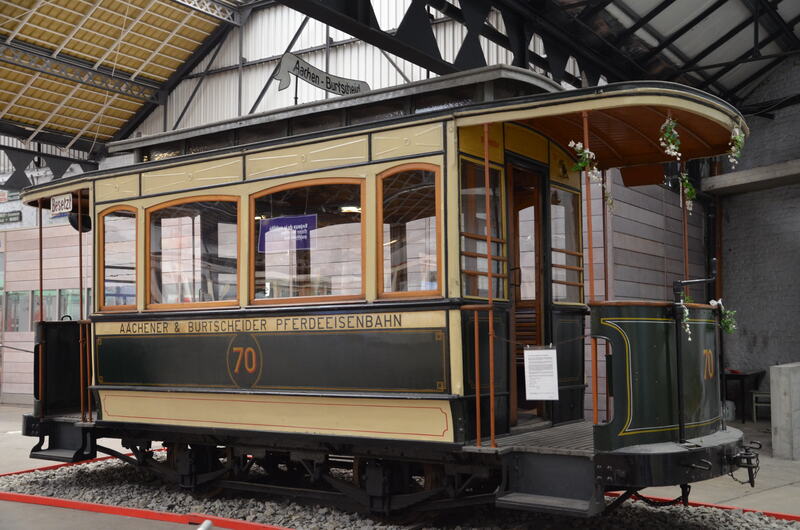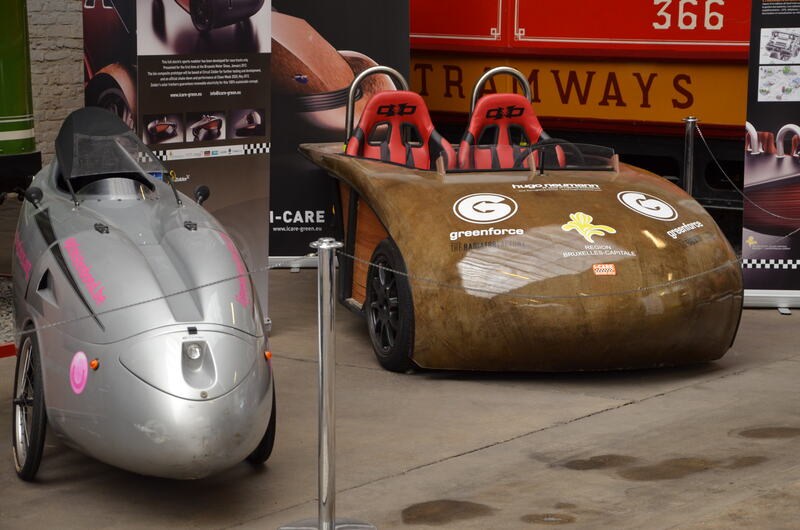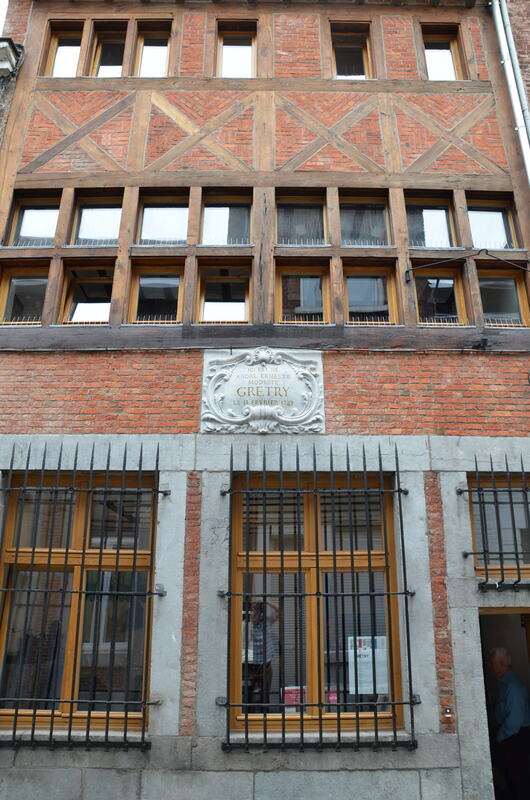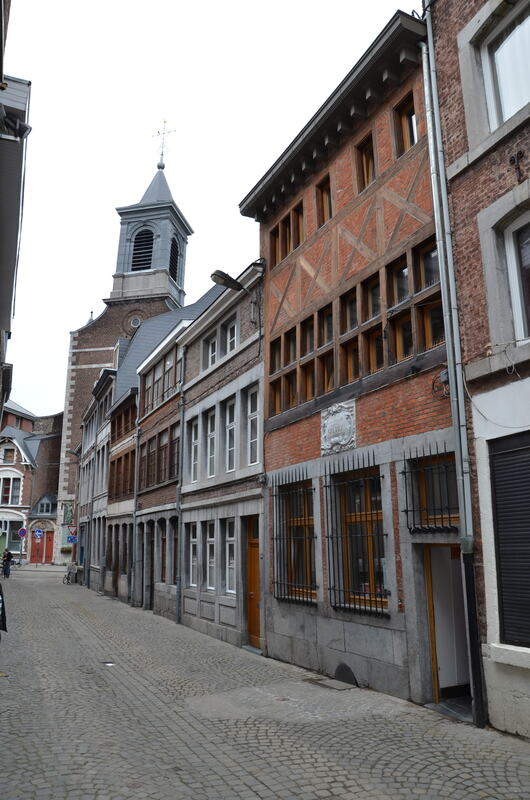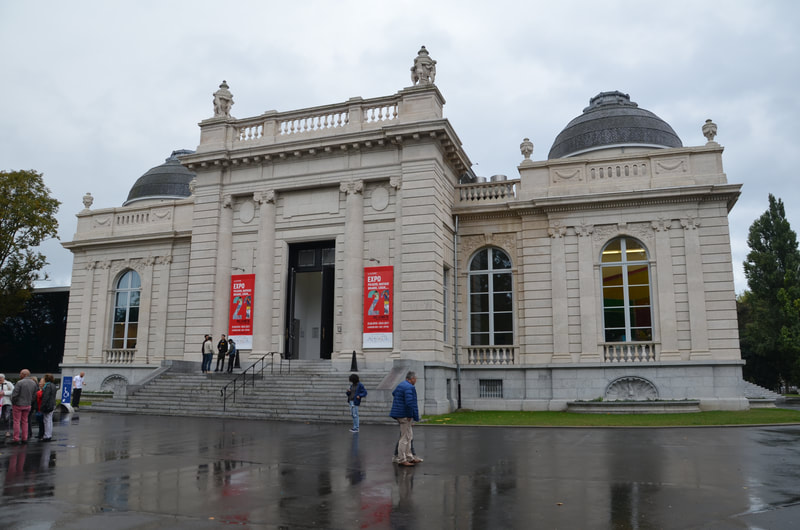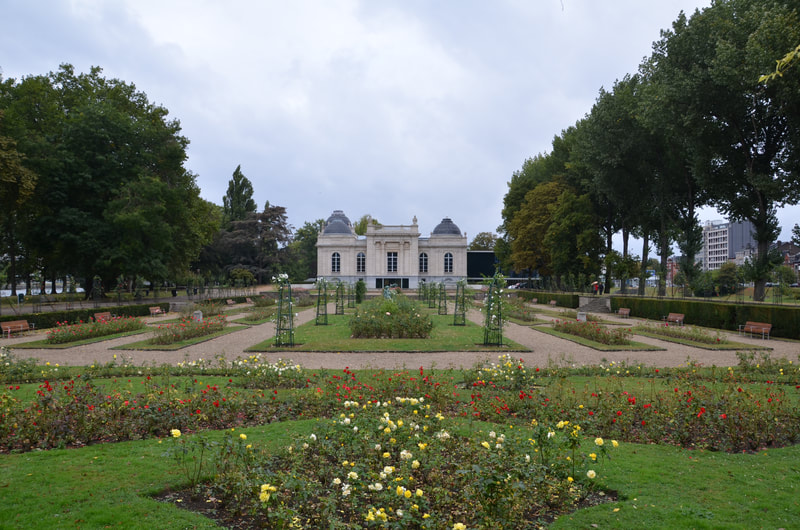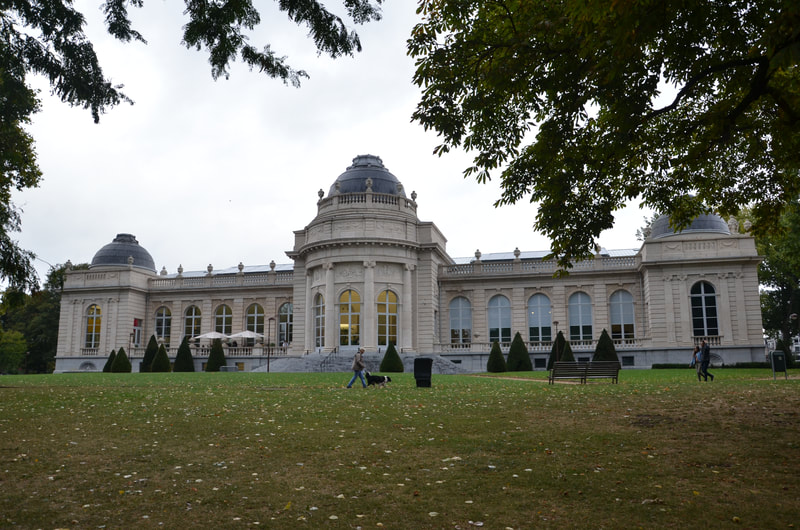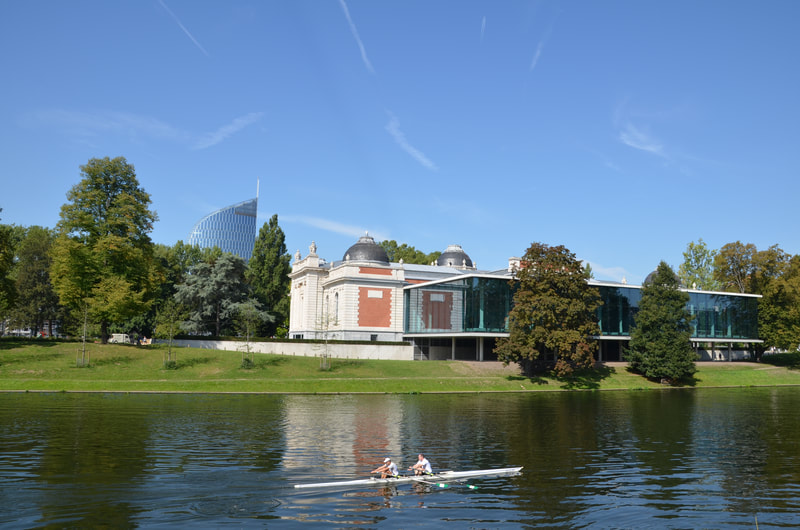Curtius Museum |
vertical divider
is located in a beautiful building, built in the years 1597-1610 as the private residence of Jan Cutrius, industrialist and ammunition supplier for the Spanish army. The use of alternating layers of red brick and natural stone as well as multi-part windows resulted in the building in a style characteristic for this region, known as the Mosan Renaissance.
|
Po renowacji w 2009 roku budynek mieści obecnie zbiory czterech dawnych muzeów: Muzeum Archeologicznego, Muzeum Broni, Muzeum Sztuk Dekoracyjnych i Muzeum Sztuki Religijnej i Mozańskiej. Na dziesięciu tysiącach metrów kwadratowych powierzchni wystawowej zgromadzono zbiory o bardzo różnej tematyce. Część dotycząca archeologii prezentuje zbiory pochodzące z okresu neolitu, paleolitu, przez czasy Gallo-Romańskie, aż po erę Merowingów i Karolingów. Większość eksponatów pochodzi z wykopalisk w Walonii (Spy, Engis, Liege, Omal).
On display are, among others: wood carvings, manuscript, cutlery, Walloon, Flemish, Italian, German and French paintings, all kinds of oriental fabrics and liturgical decorations from the 8th-19th centuries. Part of the museum is dedicated to the person of St. Lambert. Here are the most important historical and iconographic memories of this saint. You can also see the 1/100 model of the Cathedral of Notre-Dame-et-Saint-Lambert, which was destroyed in 1794.
The decorative arts section consists of: sculpture, jewelery, ceramics and porcelain. We can also find a beautiful collection of glass and furniture from the Gothic period. Many are delighted with the huge collection of weapons. In a section with around 13 thousand exhibits, the collection is divided into two parts: civilian and military weapons.
The decorative arts section consists of: sculpture, jewelery, ceramics and porcelain. We can also find a beautiful collection of glass and furniture from the Gothic period. Many are delighted with the huge collection of weapons. In a section with around 13 thousand exhibits, the collection is divided into two parts: civilian and military weapons.
|
Address:
Quai de Maastricht 13
B- 4000 Liege |
Opening hours:
poniedziałek-niedziela 10.00-18.00
wtorek-nieczynne |
Ticket price:
9 euros
|
Musee de la Vie Wallonne
Mieści się w budynku dawnego klasztoru franciszkanów, nieopodal wzgórza Montagne de Bueren. Bogate ekspozycje prezentują rzemieślnicze warsztaty wyrobu świec, obróbki miedzi, kamieniarstwa, wyplatania koszy czy wyrobu szkła. Warto też zobaczyć ogromne formy na ciastka, przykłady mozańskiej sztuki metalurgicznej, oraz kolekcję drewnianych kukiełek z różnych teatrów lalkowych. Muzeum pokazuje życie codzienne mieszkańców Walonii, ich wierzenia, prawa, sztukę.
|
Address:
Cour des Mineurs,
4000 Liege |
Opening hours:
tuesday-sunday: 9.30-18.00
monday: only for groups, reservation required. |
Ticket price:
5 euros
|
Tchantches Museum
Powstało w dzielnicy Outremeuse w 1947 roku. W roku 1959 zostało przeniesione pod adres Surlet 56, gdzie mieści się do dnia dzisiejszego. Muzeum posiada wiele dokumentów, fotografii i przedmiotów związanych z folklorem okolicy Mozy. Można tu podziwiać również wspaniałe kostiumy Tchantches (ponad 340), kolekcję lalek, a w barze napić się ulubionego napoju Tchantches, Le Peket.
Address:
Rue Surlet 56,
4020 Liege
Rue Surlet 56,
4020 Liege
Museum of Public Transport
The museum invites you to discover the means of transport from the past. About forty vehicles, which made the history of public transport from the 18th century to the present day, were deployed in the former tram depot. The collection includes horse carriages, electric trams and buses.
|
Address:
Rue Richard Heintz 9 4020 Liège |
Opening hours:
01.03-30.11 poniedziałek-piątek: 10.00-17.00 sobota-niedziela: 14.00-18.00 |
Ticket price:
5 euros |
André Modeste Grétry Museum
Znajduje się w miejscu urodzin mistrza francuskiej opery komicznej, na rue Recollets 34, w Outremeuse. W muzeum, oprócz wielu osobistych przedmiotów kompozytora, zgromadzono także jego książki, listy, rękopisy.
|
Address:
Rue des Récollets 34 4020 Liège |
Opening hours:
piątek-niedziela: 10.00-18.00 |
Ticket price:
2.25 euros |
Museum of Fine Arts
Mieści się w pałacu wybudowanym w parku La Boverie, na krańcu wyspy Outremeuse. Ten wspaniały budynek powstał z okazji odbywających się w Liege, w 1905 roku, Światowych Targów. Autorami projektu byli dwaj architekci, zarządzający targami, Jean-Laurent Hasse i Charles Soubre. Muzeum posiada wspaniałą kolekcję, obejmującą dzieła francuskojęzycznych artystów belgijskich z XIX i XX wieku. Prace prezentowane są w porządku chronologicznym, od obrazów XVI-wiecznych malarzy, takich jak Henri Bles, czy największy artysta z Liege Lambert Lombard, po płótna współczesne. Wiszą tu również dzieła Lairesse, Douffet, Defrance, Meunier, de Witte czy Heinza. Perłą w koronie muzeum są obrazy (zakupione w 1939 roku w Lucernie) artystów takich jak: Picasso, Chagall, Gauguin, Ensor, Monet, Ingres, i wielu innych.
|
Address:
Parc de la Boverie, 4020 Liège |
Opening hours:
wtorek-niedziela: 10.00-18.00 |
Ticket price:
5 euros |
Musee d'Ansembourg
Created in a house built for a banker, in the transitional style of Louis XIV-Louis XV, in 1740. Hence the splendor visible both inside and outside the building. The house retains the original interior design: carved woodwork, stucco ceilings, curdocks (leather wallpapers). There is an excellent collection of 18th-century furniture and ornaments. The museum also has a rich collection of clocks, especially the unusual six-dial clock from the end of the 18th century by Hubert Sarton.
|
Adres:
Feronstree 114, 4000Liege |
Godziny otwarcia:
wtorek-sobota 10.00-18.00 |
Ticket price:
5 euros |
